This article was medically reviewed by Janice Litza, MD. Dr. Litza is a board certified Family Medicine Physician in Wisconsin. She is a practicing Physician and taught as a Clinical Professor for 13 years, after receiving her MD from the University of Wisconsin-Madison School of Medicine and Public Health in 1998.
There are 10 references cited in this article, which can be found at the bottom of the page.
wikiHow marks an article as reader-approved once it receives enough positive feedback. In this case, 93% of readers who voted found the article helpful, earning it our reader-approved status.
This article has been viewed 233,912 times.
An aneurysm is a bulge in the wall of a blood vessel caused by the weakening of the vessel wall. Aneurysms can occur in any blood vessel, but the most dangerous aneurysms are those that form in the aorta or the arteries in the brain. Ruptures in the vessels can lead to death up to half the time they occur. Aneurysms are often difficult to detect until they rupture, and equally difficult to prevent, but there are steps you can take to lower your risk of an aneurysm and understand whether you may need screening.[1] See Step 1 for more information.
Steps
Getting Screened
-
1Learn your family history. If at least two other members of your family have had aneurysms, either recently or in the past, you should be screened for the possibility of developing an aneurysm yourself.[2] Doctors normally recommend such screenings every five years.
- Most aneurysms are detected after the fact, when they've already become medical emergencies, or when brain imaging is performed for other purposes. Because it's a difficult thing to screen for, most doctors will recommend against testing and looking for aneurysms that are not ruptured, unless you've experienced any of the symptoms or fit the profile of an aneurysm.
- In most cases, screening is recommended for men age 65-75 who have smoked at some point in their life. Men of this age group who have never smoked may receive selective screening based on the rest of their health history. Women in this age group generally aren't recommended for screening.[3]
-
2Recognize the symptoms of an aneurysm. If you experience eye pain, specifically pain coming from behind the eye, as well as blurry vision and paralysis of the face, you need to talk to your doctor immediately and request that a screen and scan be performed.[4]Advertisement
-
3Learn the different types of scans. Your doctor may throw a lot of technical possibilities at you, so it helps to be somewhat informed before getting stuck in his or her office and getting locked into possibly-expensive tests that you might not want done. Generally, the scans performed will include:[5]
- Computerized tomography (CT). This is a special kind of X-Ray usually used to detect bleeding. The scanner produces slice-like sections of your brain to examine, and might also involve injections of fluid that will illuminate the blood in the images.
- Magnetic resonance imaging (MRI). An MRI generally uses a combination of radio waves that interact within a magnetic field to produce a detailed 2D or 3D version of your brain. Fluid may also be injected to improve the image. Magnetic resonance angiography (MRA) may be combined with your MRI. An MRA uses the same technology to produce images of the major blood vessels in your body.
- Cerebrospinal fluid test. Also known as a "spinal tap," this is used in cases in which you've experienced a hemorrhage that isn't showing up on another scan. Despite the gruesome common name, most patients don't experience much discomfort during or following the test.
- Cerebral angiogram. During this test, a thin probe is inserted near your groin and threaded through your arteries to your brain to inject a dye, which is used to track the flow of blood and check for hemorrhaging. It's the most invasive of the tests, only used when the others don't reveal anything.
- Abdominal Ultrasound. During this test, your doctor or an ultrasound technician will perform a basic ultrasound of your abdomen. This is used to screen for an abdominal aortic aneurysm.
-
4Talk to a specialist. If your doctor notices something in a scan, or if you're concerned about the possibility of an aneurysm, you'll probably be referred to a specialist. If you fit the risk profile or have experienced any of the symptoms of an aneurysm, talk about your tests with a neurosurgeon or neurologist to get more information. Further tests and screens may be required, and you'll be able to get more specific information from an expert in the field.[6]
Managing Your Health
-
1Quit smoking. In addition to increasing the risk of developing emphysema and lung cancer, smoking also increases your chances of developing an aneurysm. You may need your doctor's help to find the right program to help you quit.[7]
- Also avoid exposing yourself to secondhand smoke. If you fit the risk profile, avoid indoor areas that allow smoking.
-
2Moderate your drinking. Drinking too much alcohol can also weaken blood vessel walls, increasing the possibility of developing an aneurysm. If you have other problems related to excessive drinking, you may need to give it up entirely[8] .
-
3Use drugs correctly. Abusing drugs, prescription or otherwise, can lead to inflammation in blood vessels and the formation of aneurysms. Habitual cocaine and amphetamine users are particularly susceptible to the development of brain aneurysms.[9]
-
4Adopt a healthy diet. Choose a diet with a variety of fruits, vegetables, whole grains, lean meat and non-meat protein sources. Avoid excess fats, cholesterol, sodium and sugar. Eat smaller portions, or start preparing more of your own meals to have more control over your portions. Consider eating several smaller meals throughout the day, rather than two or three big ones.[10]
-
5Exercise regularly. Maintain good cardio health and do some light strength training to maintain a healthy body weight and physique. Exercising at least 30 minutes every day will help you avoid an aneurysm or prevent one from rupturing. Your doctor can recommend suitable exercises for you if you want to get started. You don't have to go all out. If you want to start exercising, try starting with:[11]
- Light stretches in the morning before breakfast. Just doing some calisthenics for 15 or 20 minutes each morning will get you moving and can be a nice warm up to stimulate other activities.
- If you have been diagnosed with an unruptured aneurysm, isometric training, heavy lifting, or high-intensity exercise is not recommended. [12] .
- Check out some exercise videos online or at your local library for some guided instruction, or talk to your doctor for more possibilities.
-
6Monitor your overall health. Key factors to avoiding an aneurysm or preventing one from rupturing include monitoring your weight, cholesterol, blood glucose and blood pressure levels. Scheduling regular doctor's visits and staying on top of your health is the best way to avoid aneurysms altogether.[13]
Managing Your Stress
-
1Learn to recognize stress triggers in your life. Taking steps to manage your stress level can help you avoid developing an aneurysm or, quite literally, "popping a blood vessel." If you want to lessen the amount of stress in your life, start by learning to recognize the things that cause stress that you can work on. You might be stressed out about:[14]
- Relationship issues
- Work
- Family commitments
- Financial problems
- Other trauma
-
2Take some time off of work. You deserve a break, especially if you're concerned about your health. Discuss the possibility of taking some brief time off from your job to rest up and eliminate some of the stress that you're concerned about from your life. Forget about your work worries for a while and come back refreshed and rested. Go on vacation. Visit family. Do what will relax you.
- If your job is a constant source of agitation and stress in your life, you might consider switching jobs, transferring, or finding a new line of employment altogether.
-
3Participate in relaxing and healthy hobbies. You don't have to start building ships in bottles to calm down. Find something that excites you and distracts you from the stresses of life. Want to start playing paintball? Get out there and try it. Do something that will be fun, something that exercises your mind and your body. Try:[15]
- Playing games like poker or chess
- Doing outdoor activities like hiking, biking, or swimming
- Reading more
- Picking up an instrument, or renewing an interest in an old one
- Taking a class or lessons
-
4Consider meditation. Studies have shown that oldest populations worldwide all have one thing in common: they all participate in quiet, restful activities that involve no speaking, each day. Many perfectly normal people enjoy the relaxation involved in meditation, and you don't have to be a yoga master to experience the benefits.
- Simply sitting quietly in or outdoors for 20 or 30 minutes each day can drastically reduce your stress. Start watching the sunset or rise each day as a way of relaxing and centering yourself.
Expert Q&A
-
QuestionDoes marijuana trigger aneurysms?
 Janice Litza, MDDr. Litza is a board certified Family Medicine Physician in Wisconsin. She is a practicing Physician and taught as a Clinical Professor for 13 years, after receiving her MD from the University of Wisconsin-Madison School of Medicine and Public Health in 1998.
Janice Litza, MDDr. Litza is a board certified Family Medicine Physician in Wisconsin. She is a practicing Physician and taught as a Clinical Professor for 13 years, after receiving her MD from the University of Wisconsin-Madison School of Medicine and Public Health in 1998.
Board Certified Family Medicine Physician Not specifically, but smoking in general increases the risk or aneurysms.
Not specifically, but smoking in general increases the risk or aneurysms. -
QuestionAre severe migraines symptoms of an aneurysm?
 Janice Litza, MDDr. Litza is a board certified Family Medicine Physician in Wisconsin. She is a practicing Physician and taught as a Clinical Professor for 13 years, after receiving her MD from the University of Wisconsin-Madison School of Medicine and Public Health in 1998.
Janice Litza, MDDr. Litza is a board certified Family Medicine Physician in Wisconsin. She is a practicing Physician and taught as a Clinical Professor for 13 years, after receiving her MD from the University of Wisconsin-Madison School of Medicine and Public Health in 1998.
Board Certified Family Medicine Physician Any new or change in symptoms should be evaluated by your doctor, especially if you have a family history.
Any new or change in symptoms should be evaluated by your doctor, especially if you have a family history.
Warnings
- Large unruptured brain aneurysms may cause pain behind one eye, a dilated pupil or drooping eyelid, double or blurred vision, or numbness or paralysis on one side of the face.⧼thumbs_response⧽
- The most common symptom of a ruptured brain aneurysm is a sudden, severe headache. Other symptoms include seizures, nausea, vomiting, light sensitivity, vision problems, confusion or loss of consciousness.⧼thumbs_response⧽
- In some cases, the rupture is preceded by a leaking of blood, which produces a sudden, severe headache. Summon emergency help at once if you or someone else experiences severe headaches, seizures or loss of consciousness.⧼thumbs_response⧽
References
- ↑ https://www.nhlbi.nih.gov/health/health-topics/topics/arm/prevention
- ↑ https://www.heart.org/en/health-topics/aortic-aneurysm/what-is-an-aneurysm
- ↑ https://www.uspreventiveservicestaskforce.org/uspstf/recommendation/abdominal-aortic-aneurysm-screening
- ↑ https://www.nhs.uk/conditions/brain-aneurysm/symptoms/
- ↑ https://www.mayoclinic.org/diseases-conditions/brain-aneurysm/diagnosis-treatment/drc-20361595
- ↑ https://www.nhlbi.nih.gov/health/health-topics/topics/arm/prevention
- ↑ https://www.heart.org/en/health-topics/aortic-aneurysm/what-is-an-aneurysm
- ↑ https://www.nhs.uk/conditions/brain-aneurysm/prevention/
- ↑ https://www.mayoclinic.org/diseases-conditions/brain-aneurysm/diagnosis-treatment/drc-20361595
- ↑ https://www.health.harvard.edu/heart-health/understanding-aneurysms
- ↑ https://www.heart.org/en/health-topics/aortic-aneurysm/what-is-an-aneurysm
- ↑ http://www.med.umich.edu/1libr/CVC/Dominos/313-AneurysmExercise.pdf
- ↑ https://www.nhs.uk/conditions/brain-aneurysm/prevention/
- ↑ https://pubmed.ncbi.nlm.nih.gov/29672747/
- ↑ https://my.clevelandclinic.org/health/articles/8133-stress-10-ways-to-ease-stress
About This Article
You should get yourself screened for an aneurysm if you experience eye pain from behind the eye, blurry vision, and paralysis of the face. It’s also important to understand your family’s medical history and get screened if at least two other family members have had aneurysms. In the long term, make healthier life choices to reduce your risk of developing an aneurysm by reducing stress and quitting smoking and excessive drinking. For more tips from our Medical co-author, including how to choose a diet that reduces the risk of aneurysms, scroll down!
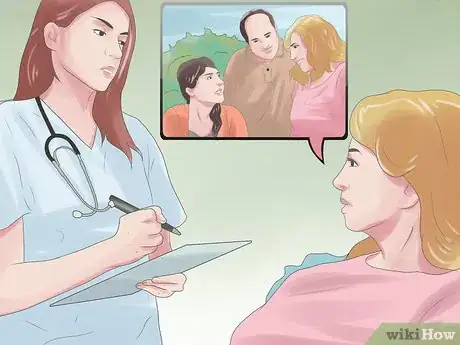
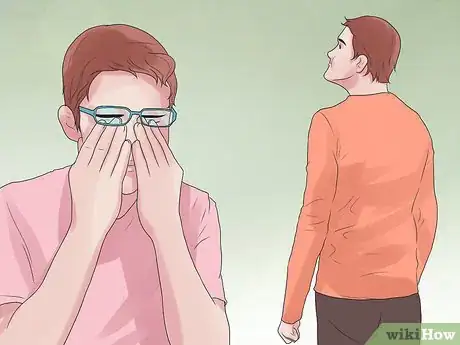
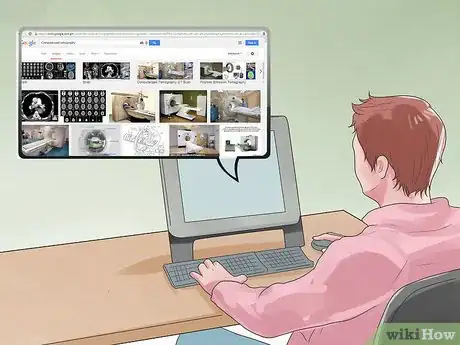
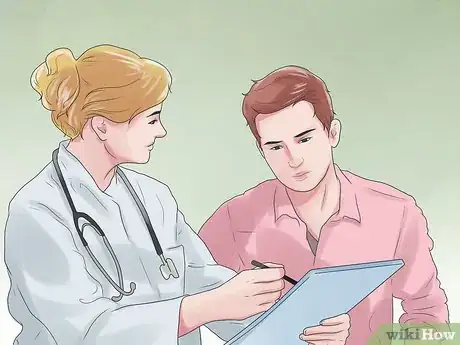
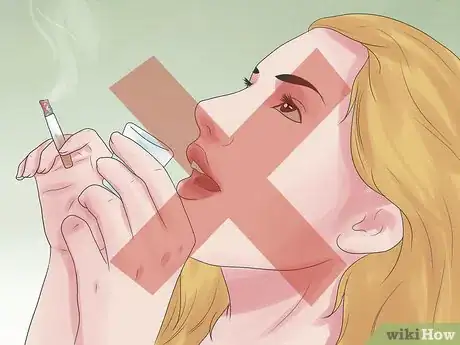

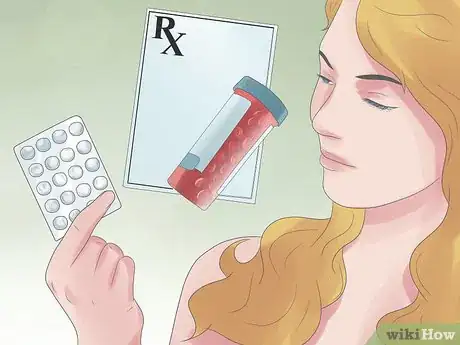


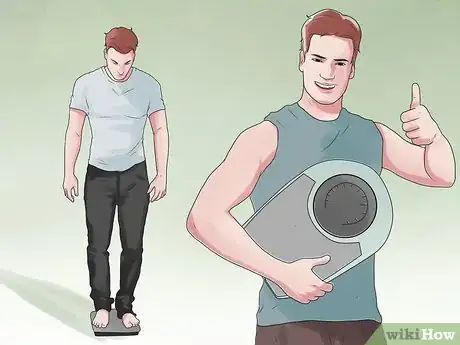










-Step-14-Version-2.webp)
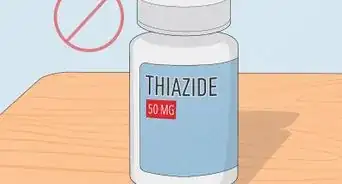
















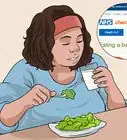


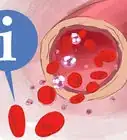



































Medical Disclaimer
The content of this article is not intended to be a substitute for professional medical advice, examination, diagnosis, or treatment. You should always contact your doctor or other qualified healthcare professional before starting, changing, or stopping any kind of health treatment.
Read More...